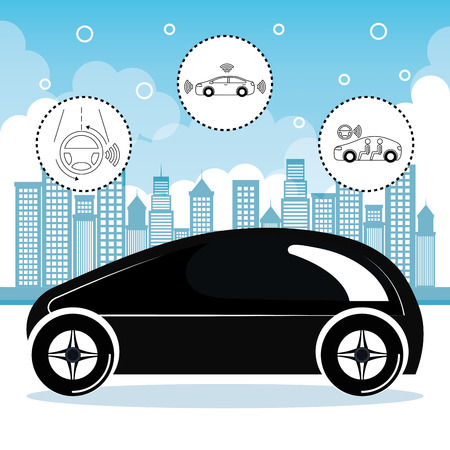1. Introduction: The Rise of Electric Vehicles
Electric vehicles (EVs) have come a long way over the years, evolving from niche products to mainstream transportation options. More people are switching to EVs as the technology improves, charging networks expand, and concerns over climate change grow. In this section, well explore the factors driving the adoption of EVs and why they are becoming more popular than ever.
Why Are EVs Becoming More Popular?
Several key factors are fueling the growth of electric vehicles:
1. Environmental Concerns
One of the biggest reasons people are choosing EVs is their lower carbon footprint. Unlike traditional gas-powered cars, EVs produce zero tailpipe emissions, helping to reduce air pollution and slow climate change.
2. Government Incentives
Many governments are encouraging EV adoption by offering tax credits, rebates, and other incentives. These benefits make EVs more affordable and attractive to consumers.
3. Lower Operating Costs
EVs tend to have lower maintenance costs since they have fewer moving parts than gas-powered cars. Owners also save money because electricity is generally cheaper than gasoline.
4. Advancements in Battery Technology
Battery technology has significantly improved over the years, allowing EVs to travel longer distances on a single charge. Many modern EVs now offer ranges that rival or exceed traditional gas-powered vehicles.
5. Expanding Charging Infrastructure
With more charging stations available across cities and highways, range anxiety is becoming less of a concern for EV owners. Public and private investments are making charging more accessible and convenient.
EV Adoption Trends
The following table highlights the rapid rise in EV adoption over recent years:
| Year | Global EV Sales (Millions) | Market Share (%) |
|---|---|---|
| 2015 | 0.7 | 0.6% |
| 2018 | 2.1 | 2.2% |
| 2021 | 6.6 | 8.6% |
| 2023 | 10.5 | 14.0% |
These numbers clearly show how EV adoption has accelerated in recent years, with more consumers and businesses making the switch.
2. The Early Days: The Origins of Electric Cars
Electric vehicles (EVs) may seem like a modern innovation, but they actually date back over a century. In fact, some of the earliest automobiles were powered by electricity—long before gasoline-powered cars took over the roads. The journey of electric cars began in the 19th century, with inventors across Europe and the United States experimenting with battery-powered transportation.
The Birth of the Electric Car
In the early 1800s, several engineers and inventors began working on electric-powered transportation. One of the first breakthroughs came in the 1820s and 1830s when Scottish inventor Robert Anderson developed a rudimentary electric carriage. While his invention was impressive for its time, the technology was not yet practical for everyday use.
By the late 19th century, electric vehicles had gained more traction. In 1889 and 1891, American innovator William Morrison built one of the first successful electric cars in the United States. His design could reach speeds of up to 14 mph, which was remarkable at the time.
Why Were Early Electric Cars Popular?
During the late 19th and early 20th centuries, electric cars had distinct advantages over gasoline-powered vehicles:
| Feature | Electric Cars | Gasoline Cars |
|---|---|---|
| Ease of Use | Easy to start, no manual cranking required | Required hand-cranking to start |
| Noise Level | Quiet and smooth operation | Loud and rough engine sound |
| Air Pollution | Zero emissions | Produced smoke and exhaust fumes |
| Speed | Generally slower | Capable of higher speeds |
| Range | Limited by battery technology | Could travel longer distances with fuel refilling |
The Challenges of Early Electric Cars
Despite their advantages, early electric cars faced significant challenges that prevented them from dominating the automobile industry:
Limited Range
The battery technology of the time was not advanced enough to support long-distance travel. Most early electric vehicles could travel only about 30 to 50 miles on a single charge.
High Cost
Electric vehicles were often more expensive than gasoline-powered cars, making them less accessible to the average consumer.
Lack of Charging Infrastructure
Unlike today, charging stations were nearly nonexistent in the early 20th century. Most people relied on gasoline stations for refueling, giving combustion-engine vehicles a significant advantage.
The Rise of Gasoline-Powered Cars
The introduction of the electric starter in 1912—eliminating the need for hand cranks—made gasoline-powered cars easier to operate. At the same time, the mass production of gasoline vehicles, pioneered by Henry Fords assembly line, drastically reduced their cost. These factors led to the decline of electric cars, which eventually faded from mainstream use for several decades.
The Legacy of Early Electric Vehicles
Although they disappeared for much of the 20th century, early electric cars laid the foundation for modern EV technology. Many of the design concepts and challenges from over a hundred years ago continue to shape todays electric vehicle industry. With advancements in battery efficiency and charging infrastructure, the vision of a fully electric future is closer than ever.
![]()
3. Technological Advancements: Batteries, Range, and Charging Infrastructure
Electric vehicles (EVs) have come a long way, thanks to significant technological advancements. From improvements in battery technology to extended range and widespread charging networks, these innovations have played a crucial role in shaping the modern EV landscape.
Battery Technology: More Power, Longer Life
The most significant breakthrough in EVs has been battery advancements. Initially, electric cars relied on lead-acid batteries, which were heavy and had limited capacity. Today, lithium-ion batteries dominate the market, offering higher energy density, longer life, and faster charging.
Comparison of Battery Technologies
| Battery Type | Energy Density | Charging Speed | Lifespan |
|---|---|---|---|
| Lead-Acid | Low | Slow | Short |
| Lithium-Ion | High | Fast | Long |
| Solid-State (Upcoming) | Higher | Faster | Longest |
Increasing Range: Eliminating Range Anxiety
One of the biggest concerns for early EV adopters was range. However, modern EVs can now travel much farther on a single charge. Earlier models had a range of around 100 miles, while todays EVs, such as the Tesla Model S and Lucid Air, boast ranges exceeding 400 miles.
Average EV Range Over the Years
| Year | Average Range (Miles) |
|---|---|
| 2010 | 100 |
| 2015 | 150 |
| 2020 | 250 |
| 2024 | Over 400 |
Charging Infrastructure: Faster and More Convenient
Another key factor in the growth of EVs has been the expansion of charging networks. Initially, charging stations were scarce, but now, fast-charging networks like Tesla Superchargers and Electrify America provide convenient charging options across the country.
Types of Charging and Their Speeds
| Charger Type | Charging Speed | Time to 80% Charge |
|---|---|---|
| Level 1 (110V) | Slow | 12+ Hours |
| Level 2 (240V) | Moderate | 4-8 Hours |
| DC Fast Charging | Fast | 30-60 Minutes |
| Ultra-Fast Charging | Very Fast | Under 20 Minutes |
The Future of EV Technology
Looking ahead, EVs will continue to evolve, with advancements such as solid-state batteries, even faster charging speeds, and more affordable high-range options. These innovations will further accelerate the transition to an electric future.
4. The Role of Automakers and Government Policies
The growth of electric vehicles (EVs) has been driven by both car manufacturers and government policies. Automakers have heavily invested in EV technology, while governments offer incentives to encourage consumers to make the switch.
How Automakers Are Driving EV Adoption
Leading car companies are pushing the boundaries of EV technology. From improving battery efficiency to expanding charging infrastructure, automakers play a crucial role in making EVs more accessible.
Major Automakers Leading the EV Revolution
| Automaker | Key EV Innovations |
|---|---|
| Tesla | Advanced battery technology, Supercharger network |
| General Motors | Ultium battery platform, expanded EV lineup |
| Ford | Popular models like the Mustang Mach-E and F-150 Lightning |
| Volkswagen | Mass-market EV strategy with the ID. series |
The Impact of Government Policies
Government support has significantly boosted EV adoption through financial incentives, infrastructure investments, and emission regulations.
Key Government Incentives
- Tax Credits: Many governments offer tax credits to reduce the upfront cost of EVs.
- Charging Infrastructure: Investments in public charging stations make EV ownership more convenient.
- Emission Regulations: Stricter policies push automakers to focus on cleaner technology.
- Grants & Subsidies: Funding for EV research and development promotes innovation.
The Combined Effort for a Greener Future
By working together, automakers and governments are accelerating the transition to electric mobility. With continuous advancements and supportive policies, the EV market is expected to expand even further in the coming years.
5. Five. The Road Ahead: Future Trends and Challenges
The electric vehicle (EV) revolution is far from over. As technology continues to advance, we can expect significant improvements in several key areas. From battery innovations to sustainability efforts and market expansion, let’s take a look at what the future holds.
Advancements in Battery Technology
The heart of any electric vehicle is its battery. Over the years, we’ve seen improvements in range, charging speed, and longevity. The future promises even greater advancements, including:
| Technology | Expected Benefits |
|---|---|
| Solid-State Batteries | Increased energy density, longer lifespan, and faster charging times. |
| Faster Charging Solutions | Ultra-fast chargers could reduce charging time to minutes rather than hours. |
| Recyclable and Sustainable Materials | Eco-friendly batteries that reduce reliance on rare earth materials. |
Growing Focus on Sustainability
As the world shifts toward greener transportation, sustainability remains a top priority. Automakers and researchers are focusing on several key aspects:
- Developing EVs with recyclable materials to minimize waste.
- Investing in solar and wind-powered charging stations.
- Creating second-life applications for used EV batteries.
Market Trends and Consumer Adoption
The EV market is expanding rapidly, with governments and automakers pushing for wider adoption. Some significant market trends include:
Lower Costs and Increased Accessibility
As technology advances, EV production costs are decreasing, making them more affordable for consumers. Government incentives and rebates further encourage adoption.
Expansion of Charging Infrastructure
With more charging stations being installed worldwide, range anxiety is becoming less of a concern for potential EV buyers.
Auto Industry Transition
More traditional car manufacturers are pledging to go fully electric, phasing out gasoline-powered models within the next few decades.
Challenges That Lie Ahead
Despite the promising advancements, challenges remain. Concerns such as battery disposal, charging infrastructure expansion, and supply chain issues need to be addressed. However, continuous research and global support are speeding up solutions to these hurdles.
The future of electric vehicles looks bright, with technological breakthroughs and sustainability initiatives driving progress. As adoption increases and new innovations emerge, we can expect EVs to become an even more integral part of daily transportation.


